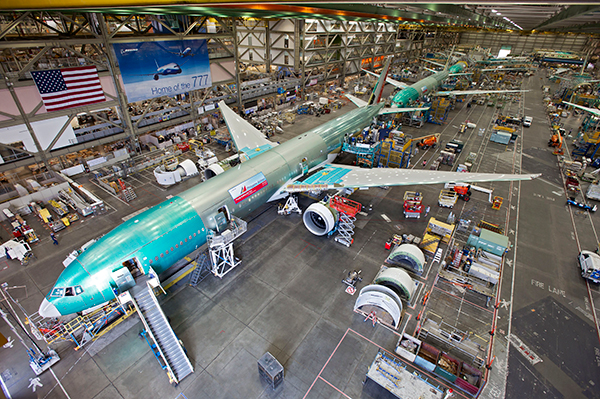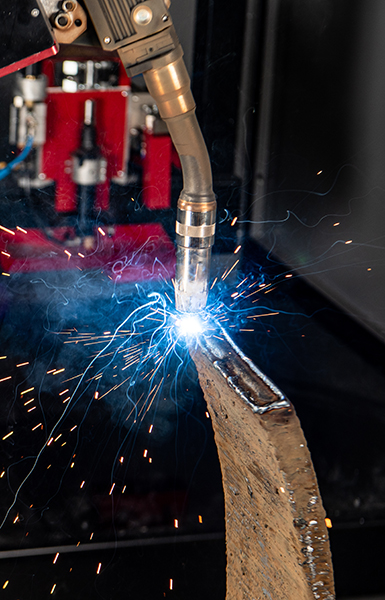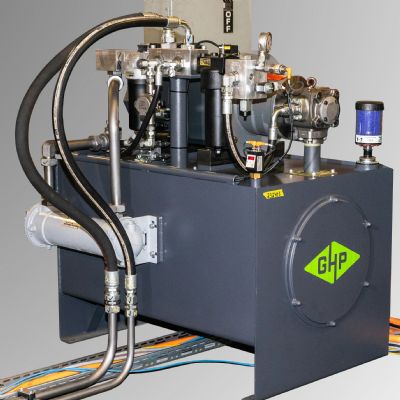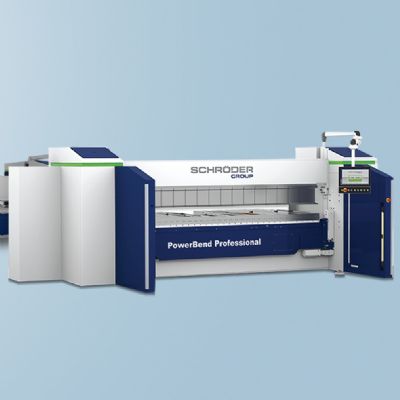All of this signals increasing business opportunities for metal formers, with metal 3D printing proving to be a useful option.
Accentuating Additive
Metal 3D printing’s aerospace ascent builds as traditional and additive manufacturing (AM) join forces via acquisitions. Among them: the purchases of Dover, NH-based Form 3D Solutions by Eastford, CT-based Whitcraft Group and of Macomb, MI-based Baker Industries by Cleveland, OH-based Lincoln Electric.
|
Viewpoint: Sourcing Trends, Tariffs and More
As president and CEO of Thomas, provider of product sourcing, supplier selection and marketing solutions for industry, Tony Uphoff stays abreast of global trends, issues and policies affecting aerospace. 3D Metal Printing recently asked Uphoff for his insights on the supply chain, tariffs and the future of aerospace.
3DMP: When it comes to aerospace, what are you tracking and what are your data showing?
Uphoff: We look at a broad set of categories to determine aerospace-industry sourcing trends. Our eight most active aerospace-related product/service categories are contract manufacturing, machining, fasteners, heat treating, painting, welding, CNC machining and composite structures. Our data show that these categories collectively have seen a 1.3-percent increase in sourcing activity year-over-year. However, over the past 12 weeks (as of this writing), sourcing activity for these categories is 10 percent above its historical average. After a strong 2018 for the industry, analysts expect growth to continue through 2019, led by growing commercial-aircraft production and continued strong defense spending. At least as far as Q1, our data seems to bear out analysts’ predictions.
3DMP: Please comment on the Boeing 737 Max troubles and its impact on the aerospace supply chain.
Uphoff: In April, Boeing began cutting its production down to 42 airplanes per month, after expectations called for 57 per month. This will affect suppliers up and down its supply chain. While it would be reasonable to expect Boeing’s main competitor, Europe’s Airbus, to pick up new orders in the wake of this, in the short term Airbus may not have the capacity to push its output higher, with Boeing and Airbus accounting for 99 percent of the global market for large commercial aircraft. Whether Boeing successfully addresses the 737 Max issues and continues long-term production, or replaces it with a new design, remains unknown. Meanwhile, Airbus also faces its own challenges and recently announced that it is abandoning production of its A380 in 2021, citing a lack of customers for the superjumbo jet. While the Boeing and Airbus scenarios will affect their respective companies and suppliers in the supply chains for those specific aircraft, the industry as a whole still expects a strong year driven by increasing passenger travel demand.
3DMP: What is your ‘crystal ball’ telling you about tariffs and aerospace?
Uphoff: The escalating trade war with China grabs most of the headlines, but something else to keep an eye on is the saber rattling between The Trump Administration and the European Union (EU). In retaliation for what it deems to be unfair subsidies the EU gives to Airbus, which the World Trade Organization ruled to be accurate, the United States is threatening to impose tariffs on aerospace-related items such as non-military helicopters, aircraft, aircraft fuselages and aircraft undercarriages from EU countries including the United Kingdom, Germany, France and Spain. While the impact of the China metal tariffs have left an impact on the industry since last summer, creating both winners and losers among domestic suppliers, should these new EU tariffs come into play, we could be looking at a significant amount of work in the aforementioned aerospace-related categories coming back to U.S. manufacturers and suppliers. Ultimately, whether it is China, the EU or America, our economies are largely interdependent, so the hope should be that all sides work out agreements that keep a level playing field and benefit all involved.
3DMP: What does the future of aerospace look like?
Uphoff: A growing percentage of metal forming for aerospace applications involve metal 3D printing, as opposed to traditional machining or stamping processes. We are already seeing it, and in fact, a recent study by Research and Markets forecast a growth rate of 23 percent between 2017 and 2021 for the AM market applied to the aerospace sector. As advancements in 3D printing and materials continue, suppliers will be able to create incredibly strong yet lightweight structures for aircraft manufacturers, who always look for every possible way to reduce weight and minimize the space required by components. I, along with other aerospace-industry analysts, expect continued growth, at least in the short term, as commercial-passenger demand and global defense spending remain strong.
|
Founded in 2015, Form 3D Solutions uses two EOS M290 machines to 3D print direct-metal-laser-sintered (DMLS) parts. Its acquisition by Whitcraft Group earlier this year leaves Form 3D Solutions founder and general manager, Joseph Gabriel, and partner Vojta Kubec, engineering manager, feeling “ecstatic” as they look forward to advancing AM in aerospace. “Every year, the FAA approves more metal 3D-printed parts, such as internal brackets and fuel nozzles,” says Gabriel. “As more materials and equipment clear the regulatory process, there continues to be innovations in 3D printed aerospace parts and tooling as well as more equipment advancements.” Gabriel looks forward to multilaser machines with larger build footprints for greater throughput and productivity, and bigger parts.
At Whitcraft Group, whose fabricating business is 95-percent aerospace with a customer list that includes Pratt & Whitney, GE and Rolls Royce, CEO Doug Folsom believes that 3D printing has the potential to change his business. “The change will be more of an evolution, rather than a revolution, but we want to be proactive, which led us to acquire the Form 3D Solutions. Whitcraft uses metal 3D printing for weld fixtures featuring inlet tubes to enable precision welding. “With 3D printing,” Folsom explains, “you have the ability to add inlets and holes where needed.”
Like Whitcraft, Lincoln Electric, provider of welding solutions, stresses a proactive approach to metal AM. Already working with customers, the company is preparing for a formal opening of its Additive Solutions facility, with more than 20 robotic AM systems, later this year. Lincoln Electric recently completed the acquisition of Baker Industries, a Detroit, MI-based provider of custom tooling, parts and fixtures for the automotive and aerospace markets. Baker’s inhouse design and manufacturing capabilities include metal 3D printing of tools for aerospace applications using EOS M290 DMLS machines. Brian Baker, vice president and general manager of Baker, says that as demand for lighter weight and greater fuel efficiency drives the development of more composite components for aerospace. 3D-printed tooling made of aluminum and steel alloys, as well as hybrid tooling that combines additive with subtractive manufacturing—CNC machining for example—enable faster tooling turnarounds by automotive Tier Ones and aerospace companies.
Looking ahead, Mark Douglass, Lincoln’s business development manager, Additive Solutions, says his group anticipates accelerating large format wire-based metal additive in certain markets such as aerospace. “Baker, as a platform acquisition and with its relationships, allows us to do that,” says Douglass.
Moreover, he says, the Wolf Robotics acquisition in 2015 accelerated Lincoln’s investment in developing complex motion control and CAD-to-path software for making larger parts. “We’ve been working on large-format additive for roughly 10 years,” he explains. “Together with our expertise in metallurgy and process technologies, such as arc and laser hot-wire welding, these acquisitions demonstrate our ongoing commitment to additive. So, too, does the 3-yr. CRADA (cooperative research and development agreement) we signed in May with Oak Ridge National Laboratories, agreeing to continue collaboration on large-scale, robotic additive manufacturing and the development of new materials and data analytics, with the goal of producing wire-based metal additive components at 100 lb./hr. We’re also considering other acquisitions.
“Our vision,” he continues, “is to think of parts holistically—from CAD to finished part, and to identify where it makes sense to incorporate additive and/or subtractive processes. Introducing a services business capable of producing parts for customers is atypical of Lincoln, but this is part of our strategy moving forward.”
(See more about Lincoln Electric’s AM work.)
Future Is Bright
Looking ahead, Deloitte’s Lineberger says that aerospace will continue as a bright spot in the global economy, made even brighter by new vertical takeoff and landing (VTOL) and unmanned aerial systems (UAS). “Bell Flight, Airbus and Boeing all are building prototypes for electrical and hybrid VTOL aircraft that can be used in and around urban areas,” says Lineberger. “In essence, we’re talking flying taxis that would take off vertically, transition to horizontal flight to transport people and/or cargo, and then land vertically.”
Why not? Amazon continues to test its drone-delivery service, while in Baltimore, MD, a drone recently transported a human kidney nearly 3 miles to a nearby hospital, where a team of surgeons successfully transplanted the organ into a critically ill patient.
Given these developments, one might say that when it comes to aerospace, the sky’s the limit. 3DMP
Note: For more on the aerospace market, see the July issue of MetalForming.
See also: Lincoln Electric Co., EOS of North America, Inc.
Technologies:
 “Aerospace remains one of the world’s most important industries, yet there is no consensus on its size and composition,” says Richard Aboulafia, vice president of analysis for Teal Group Corp., Fairfax, VA. Nonetheless, Teal Group and AeroDynamic Advisory, Ann Arbor, MI, recently defined the global aerospace industry as “all activities pertaining to the development, production, maintenance and support of aircraft and spacecraft. Included in this definition: aircraft and spacecraft manufacturing, including engines, systems, aero structures and sub-tier suppliers; missile and unmanned aerial vehicle (drones) manufacturing, airborne defense, electronics, aircraft simulators; and maintenance, repair and overhaul, including spare parts and materials.”
“Aerospace remains one of the world’s most important industries, yet there is no consensus on its size and composition,” says Richard Aboulafia, vice president of analysis for Teal Group Corp., Fairfax, VA. Nonetheless, Teal Group and AeroDynamic Advisory, Ann Arbor, MI, recently defined the global aerospace industry as “all activities pertaining to the development, production, maintenance and support of aircraft and spacecraft. Included in this definition: aircraft and spacecraft manufacturing, including engines, systems, aero structures and sub-tier suppliers; missile and unmanned aerial vehicle (drones) manufacturing, airborne defense, electronics, aircraft simulators; and maintenance, repair and overhaul, including spare parts and materials.” Teal and AeroDynamic conclude that these combined activities account for a global aerospace industry worth more than $838 billion. The new-aircraft (commercial and military) market alone, according to Teal Group figures, is worth about $200 billion.
Teal and AeroDynamic conclude that these combined activities account for a global aerospace industry worth more than $838 billion. The new-aircraft (commercial and military) market alone, according to Teal Group figures, is worth about $200 billion. 








